So you’ve seen the videos on TikTok where someone (usually a girl with the flirtiest-ever smile) sits at a pottery wheel and whips up mug after mug like it’s nothing, and you thought to yourself, hey, that looks fun! And you’re right — pottery is an amazingly fun and rewarding hobby! Ceramics have been part of human history for about 30,000 years, with pottery coming onto the scene about 20,000 years ago, according to this article on the history of ceramics. There’s a reason we’ve stuck with this craft for so long, and I’m so glad you’re looking to get your hands muddy!
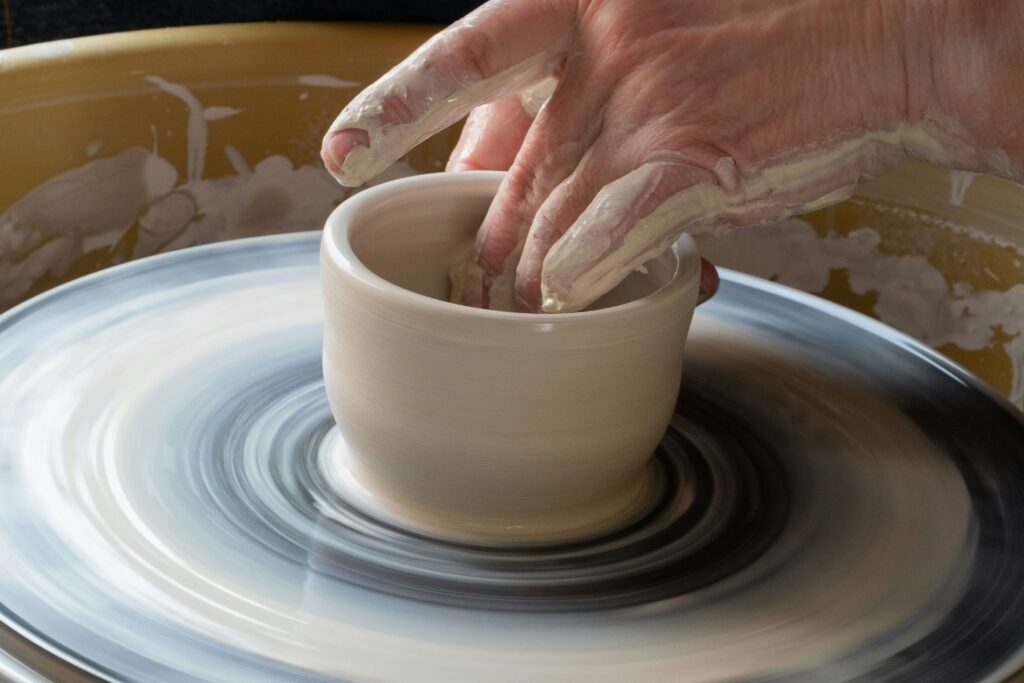
However, for many beginners, starting a home studio isn’t a realistic or sustainable option. Don’t trust that smiling TikTok girl and her bedroom studio — conducting a pottery practice like that is irresponsible and inefficient. In this post, I’ll be going through the reasons why you should NOT get started out in pottery by making your own ceramics studio at home. I’ll also go through what you should do instead. So, here it goes…
Why not start a home studio?
Safety First!
Any ceramics practice requires, obviously, clay. We all know clay as that muddy stuff our middle-school art teacher gave us for making pinch-pots. What you might not know is that clay contains tiny particles of silica, which are harmless when tamped down and wet. However, once that clay dries, the silica dust releases into the air, and can embed itself in your lungs. This causes a nasty illness called Silicosis (commonly referred to as “Potter’s Rot,” yikes!).
There are, of course, ways to protect yourself from that silica dust — one of these particulate respirators can be immensely helpful (I wear mine every time I reclaim clay, or clean the counters/floors in my classroom)
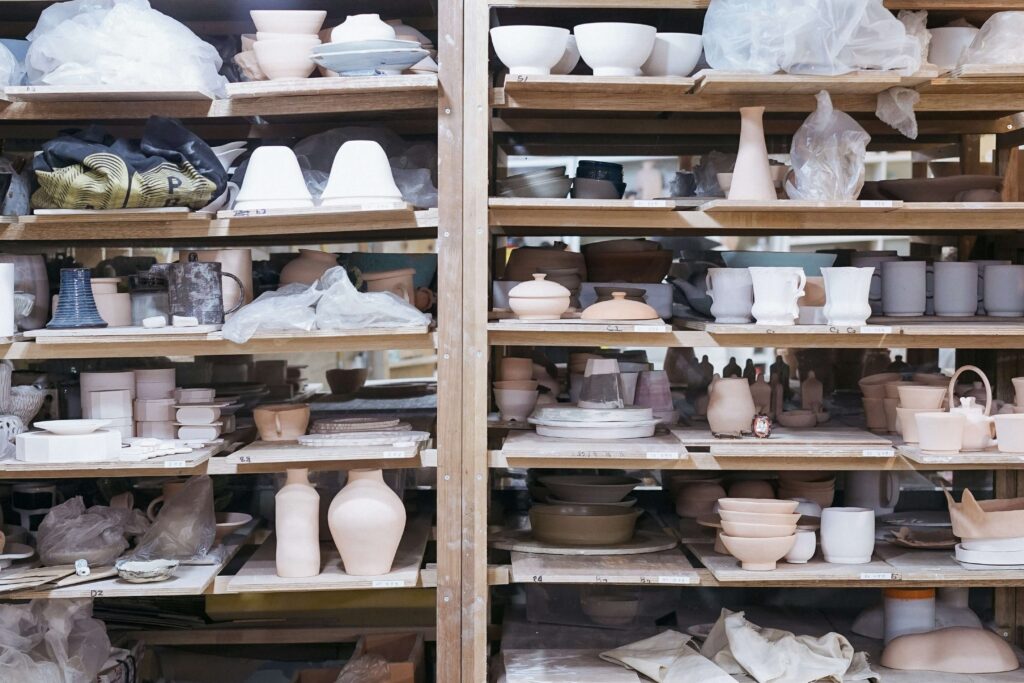
While that’s never a bad idea, it’s not just when there’s visible dust that it presents a threat. Silica particles are microscopic, and can be inhaled even when invisible. That’s why any professional pottery studio has an air-purifying ventilator, if not a whole system connected to the ductwork.
Okay, and now that I’ve sufficiently scared the wits out of you, let’s keep going…
Pottery is an EXPENSIVE craft!
Did you take a look at the link to those ventilators? They cost hundreds of dollars! A full system for a studio costs THOUSANDS. Know what else costs thousands? A kiln! Ceramics are literally useless unless they’ve been fired in a kiln — essentially, a giant toaster oven for clay. The kiln itself costs beaucoup bucks, not to mention the electricity it’ll take to fire that bad boy! (also, not to mention you need a vent system for the kiln, too, so you don’t burn down whatever shelter you’re using to fire your work… are you seeing a theme here?).
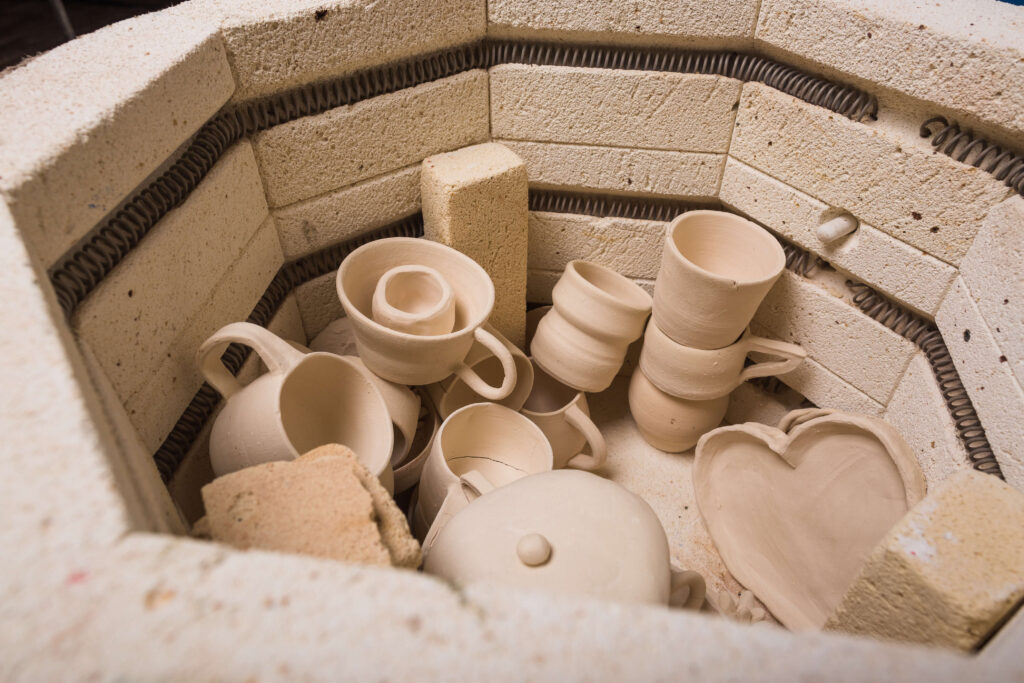
Don’t believe me? Check out this video from “Pottery to the People,” explaining the perils of buying your own kiln.
Not only are kilns a HUGE investment for something that might just be a passing fancy; they’re also complicated, and require research and dedication to learn how to run them. This brings me to my next point…
There’s so much to learn about pottery!
What kind of clay should you use? High-fire, mid-fire, low-fire? Do you want a clay body with lots of grog? Which glazes are you going to use over-top? Will you be dip-glazing or brush-glazing? And will you need underglazes or wax-resists? Do the firing temps of your clay and glaze match up? How are you reclaiming your ceramics? What kind of water filtration system do you have in place for the plumbing?
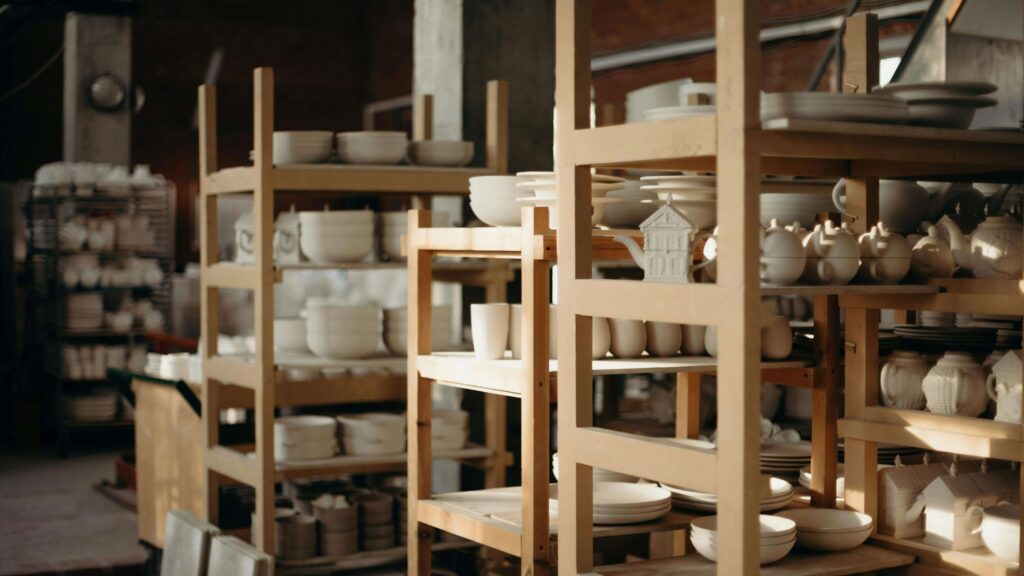
I was super-duper blessed in that I fell backwards into getting my art education at the country’s top school for ceramics. Even the intro-level wheel course I took there gave me MOUNTAINS of info on everything pottery-related. I learned how clay works, how to pack, fire, and unload a kiln, different methods for glazing and embellishing work, and most importantly, myriad techniques for throwing on a pottery wheel.
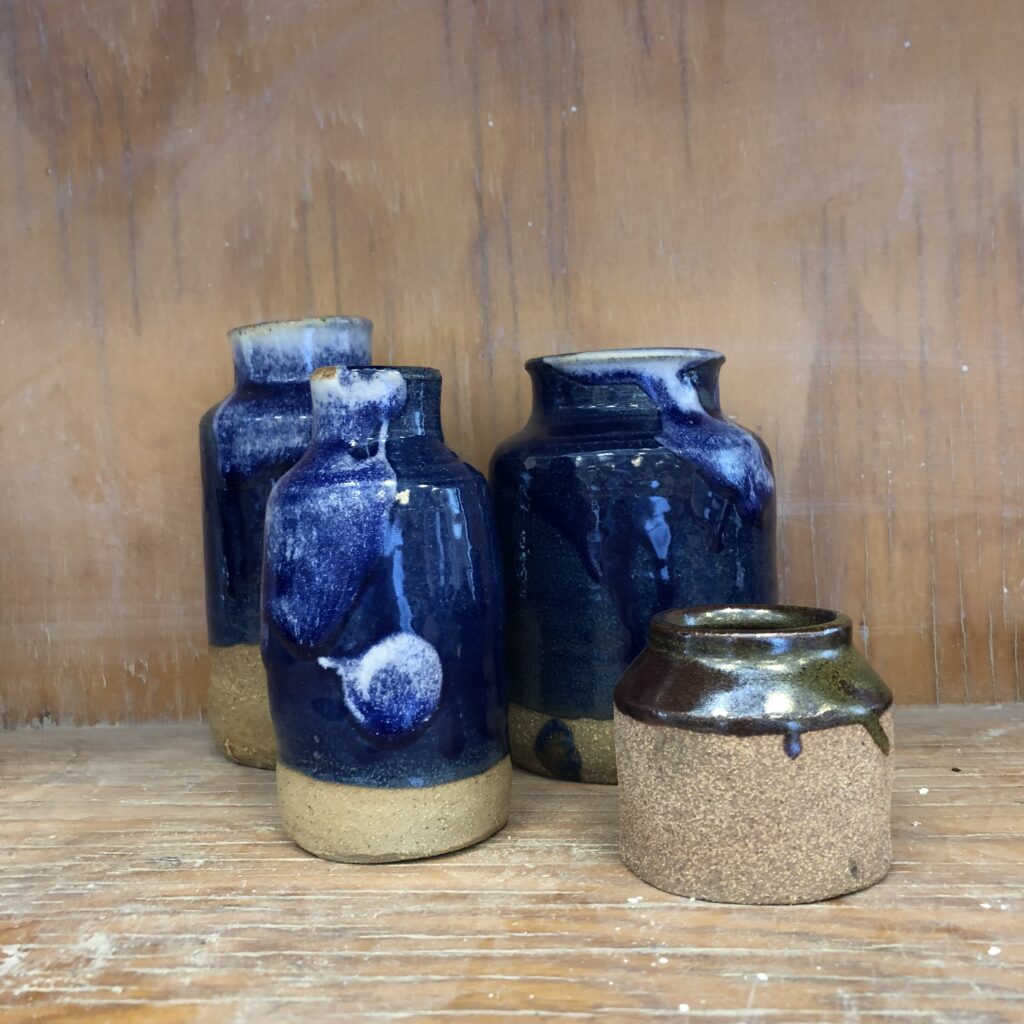

Although I was a TOTAL beginner (check out some of these pics of my very-early work… oof!), and it was intimidating to be in a studio full of artists who had come to school for exactly this craft, learning from my peers made all the difference in the world! In fact, when I got a job teaching ceramics last year, it was the friends I’d made in undergrad who I leaned on for expertise. They still help me grow my own craft as a ceramicist. Without this community, I truly would have drowned in the sea of information out there about pottery!
How you should support your pottery practice
Okay. We’ve established that just slapping a used pottery wheel in your garage isn’t going to be the best option. (although, honestly, if you’re STILL set on doing pottery at home, the garage is the best place for it because at least you can open the door and get a decent amount of fresh air.
But what’s TRULY the best option for budding young (or not so young… no judgments here!) ceramic-hopefuls?
The community studio!
Take a class, sign up for a membership, book hours with an instructor!
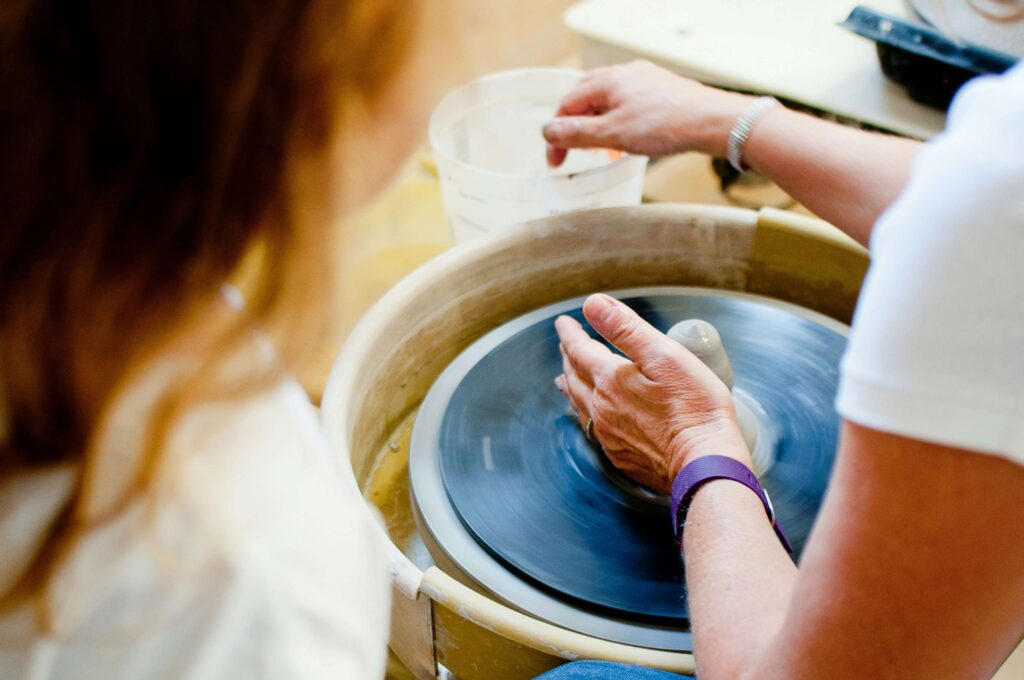
No, I’m not talking about those studios where kids have birthday parties and paint pre-made, slip-cast bisqueware. I’m talking about a real pottery studio. This is like the difference between a paint-and-sip party, and a course where you learn to stretch your own canvas and mix your own oil paints.
Where to Find One?
Real pottery studios are hiding out near you, I promise! Before I looked into options near me, I’d assumed they weren’t around. The key is to google “pottery studios near me,” not “ceramics place near me” (which will give you more of those Color-Me-Mine type places). It’s also worth checking out this list of top studios offering ceramics classes, because you just never know if one might be nearby!
At a studio like this, you’ll have SO many benefits. For one, materials are often included, which means you’re not dropping a ton of money on a clay you don’t even know if you’ll like using! You’ll also have access to tools and equipment that are needed for pottery — using a studio’s wheel is like getting a chance to test-drive a car before deciding if you want to buy one!
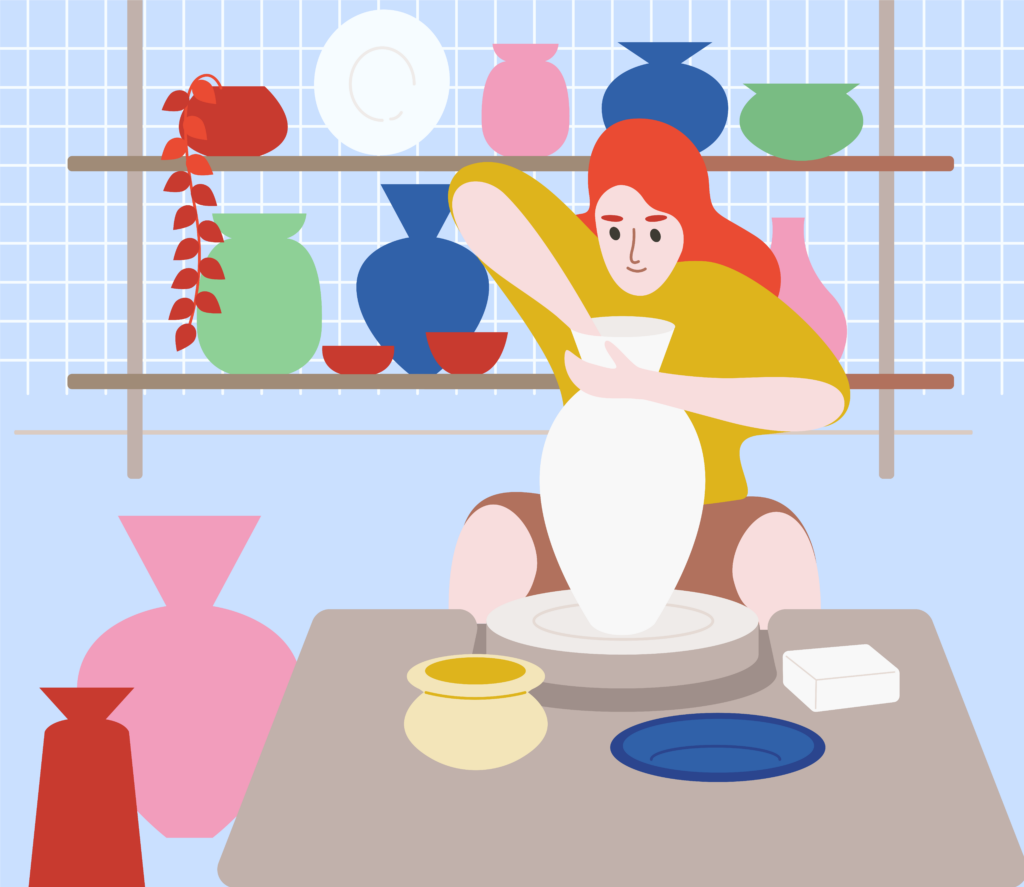
Next, these studios offer a collaborative environment where you can learn from other artists, form friendships, and get/give inspiration! It can feel intimidating to walk into a space like this as a beginner. I remember that from my first wheel class — making lumpy one-pound bowls while the guy next to me was throwing a giant, curved vase with precariously thin walls. But just remember — and I know this is a cliche — everyone was a beginner once! The great thing about the ceramics community is that we’re all in it for the love of the craft. The people around you will want to help you fall in love with clay, just like we all did once.
How to Get Started
I’d recommend starting with a class or two — typically, these meet once a week, and include some amount of studio hours outside of class-time wherein you can practice what you’ve learned so far.
From there, see if your local studio offers open-studio hours, or a membership. This is where artists can go in and work independently on their work for a monthly fee. This way, you can make your work in a space where you can work safely with high-quality materials. It’ll also have a kiln where your work can be fired by someone who knows what they’re doing. And, hey, if you give this a whirl and decide you love it, ask if you can learn to fire that kiln eventually!
To Wrap Up…
I’m not saying that no one should ever have a personal pottery studio… I’d love to have a space of my own dedicated to my ceramics practice someday! But for now, I’m a single girl living in a one-bedroom apartment and surviving on a teacher’s salary. Setting up my own studio right now is NOT in the budget! A community studio is a great space for growing skill sets, gaining knowledge, building a support system, and saving a ton on materials and equipment. I strongly encourage you to give it a try!
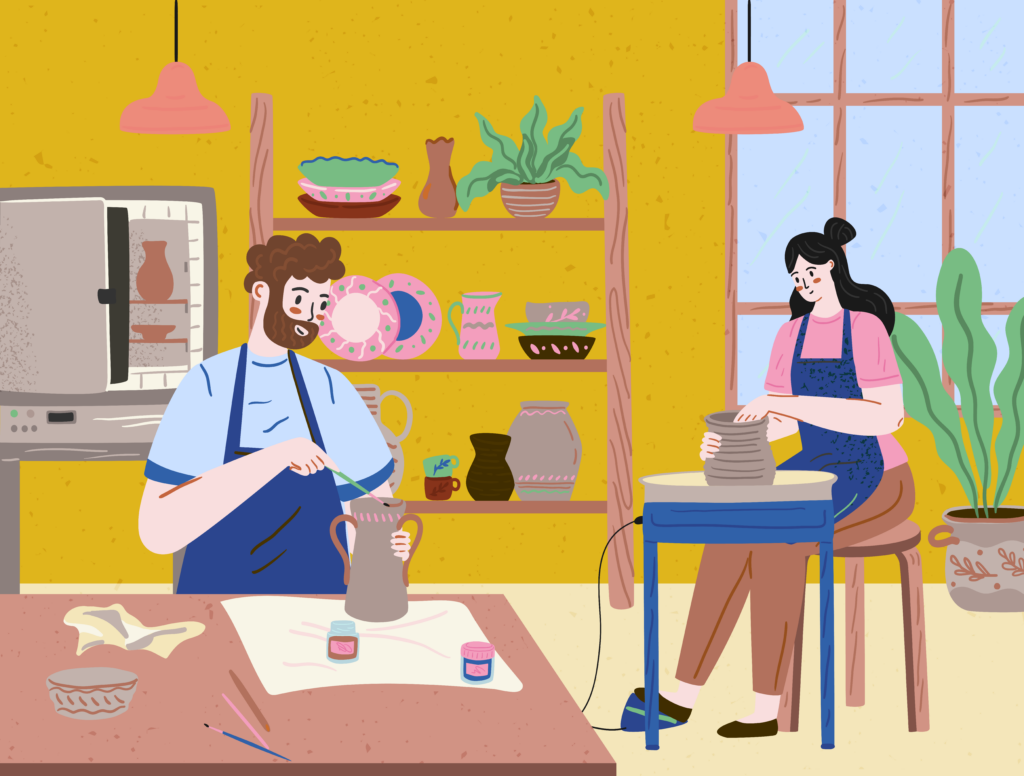
Have any questions? Have you ever been a member of a local pottery studio? Let me know in the comments below!
